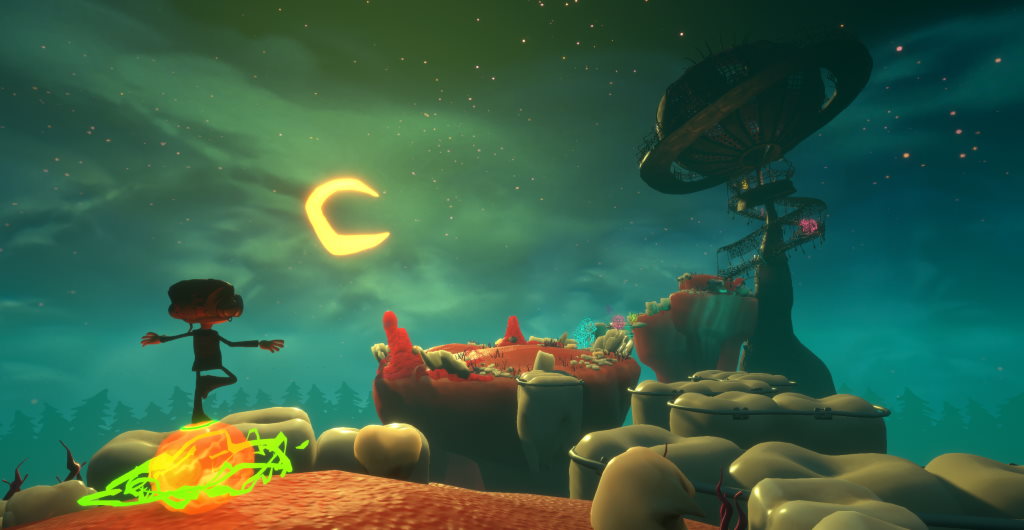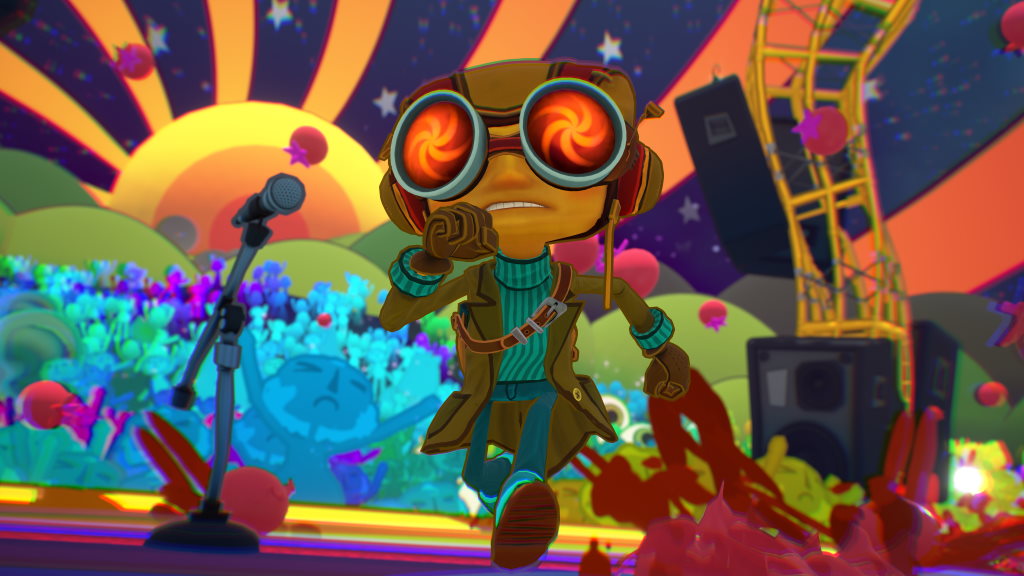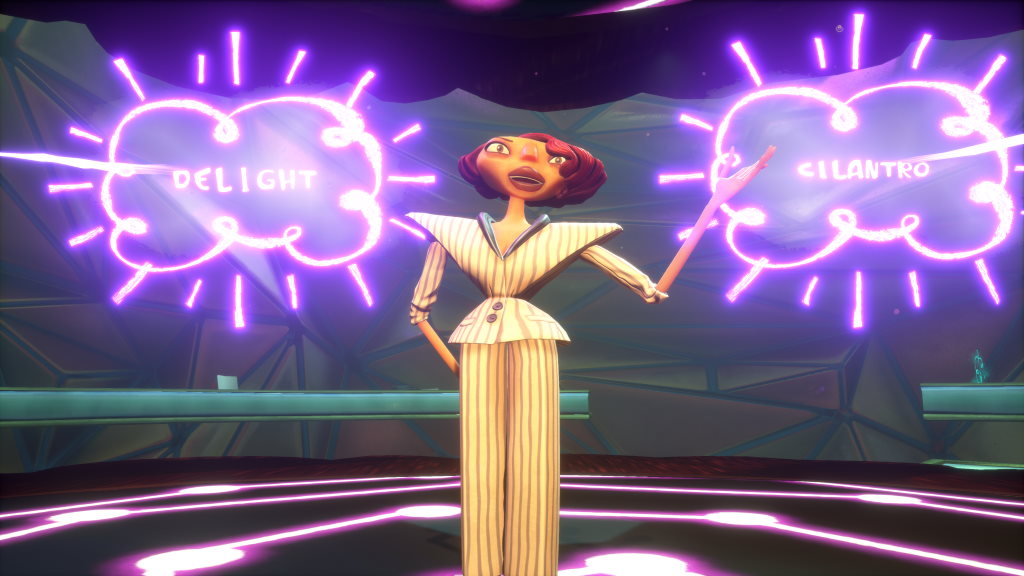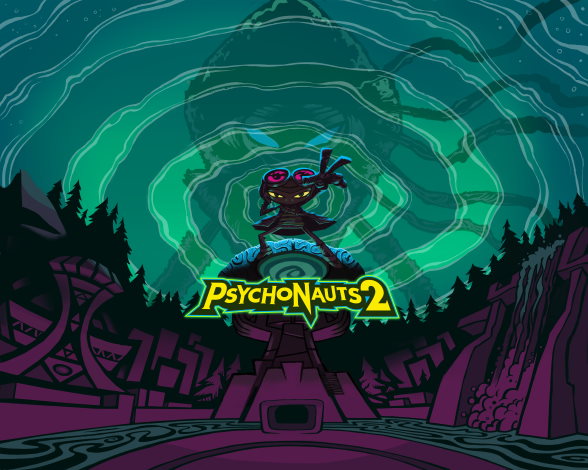Sixteen years and change after the review of Psychonauts comes our day-one day-negative-two look at a sequel that somehow manages to improve on a bona fide classic.
It’s better. As someone who truly loved Psychonauts I did not expect to write those words, but Double Fine’s evolutionary take on the 2005 classic is just that. Better. And with an emphasis on evolutionary: If you played the original – and I take it for granted that you did – you will feel right at home with the sequel. That’s objectively a good thing, as messing too much with the formula would make little sense even this many years later.

Psychonauts 2 starts right after Rhombus of Ruin – a VR game you in all likelihood didn’t play – with Raz finding himself inside Dr. Loboto’s mind, trying to figure out who set up the dentist to kidnap the head of the Psychonauts, Truman Zanotto. After an unsuccessful run through his brain, the Psychonauts team returns to HQ to continue their investigation. Things have changed there in Zanotto’s absence: Hollis Forsythe has taken the Psychonauts in a new direction, and Raz, originally thinking he’d be a full-time agent, is placed in the intern program. From there… well, this is a non-spoiler review, but let it be known, a roller-coaster into the mind of mythology and mystery starts rolling, not unlike the first game.
Not unlike, yet with a whole lot more of everything.
The first thing you’ll notice in HQ is that while the original’s premise is mirrored – new kid at camp/new intern at Psychonauts – the sequel’s content density is packed to the rim. Hilarious content at that, from the fresh dialogue to the humiliation poor Raz has to go through as the new kid. Pranked by the older interns and having his first job be a mailroom assistant are just some of the day-to-day challenges Raz has to face. All of this will not surprisingly play into the bigger story, but there is enough side hustle to keep you busy for hours without leaving HQ. The hub, taking the place of camp, is filled with the type of scavenger hunts and hidden areas seen in the first game, though this time seemingly more vast. I’m not sure if this comes down to the actual location being bigger or not, but it is filled with a large number of non-playable characters that make it feel alive. It would have been nice if you could actually interact with these agents in meaningful ways, but at least they add a layer to the overall atmosphere.

That atmosphere… it’s spot on. Seeing the original’s visual style designed for high-resolution displays (I played the game on a PS4 hooked up to a 4K TV) is almost surreal this many years later. The environments are absolutely what I had hoped for; the character design even more fun. Psychonauts’s distinctive look has now truly been cemented as what I’d label “iconic.”
And the music: Hearing the classic themes mixed with new tracks is a treat, particularly when the production value has been upped to what we’ve come to expect from latter-day Double Fine. The music shifts organically between areas and locations, in some ways evoking iMuse. It’s not a one-to-one comparison to LucasArts’ technology but the visceral feeling is right there.
As for the brains themselves – the meat of the game – you will find the variety you would expect, with levels reflecting each person’s foibles. Additionally, the designs are Psychonauts 2 largest leap. While the original took an interesting dive into visualizing each character’s emotion, the sequel takes its time dealing with more grounded mental health issues. Double Fine has clearly put a lot of thought into Psychonauts 2’s emotional investments and successfully so. Again, this is a spoiler-free review, but even if it wasn’t, it is an aspect I’d want you to experience fresh-eyed. Mixing fun and varied platforming with emotional payoffs make for satisfying storytelling.
Also worth noting is the expansion of game mechanics in addition to the enemies you will meet in the brains. All the abilities from the first game are here – thankfully no relearning is required, minor tutorials aside – and an emphasis is put on power-ups instead. You can fine-tune your style depending on how you prefer to play the game, and what figments and emotional baggage you can reach depends on your choices. Like the first game, in other words, just suitably a little different.
Once again, you’ll be expected to fight Censors but also new mental-based enemies. Enablers, for example, and Bad Ideas. Hey, we all have them: quite literally fighting them is quite illuminating.

So, I don’t know. I’m not really finding much to knock down Psychonauts 2 for. Some secondary characters talking over each other is annoying – that was also the case with the previous game – but rarely is it aggravating. In a sense, the surprising amount of callbacks to Rhombus of Ruin is what might be the most jarring part of the story. I never played the VR outing and anecdotally neither did many others. There is, thankfully, a very well presented (and very funny) intro that sums up the previous games, but I don’t know… I guess I can understand it all, but it’s a bit like a movie that expects you to read companion comic books. Most of us tend to skip those.
And yes, I know I am nitpicking as that is about as much as I can hold against Psychonauts 2. It’s a great game, like Psychonauts, just more so. That’s a glorious feeling.
I’ll be interested to see where Double Fine and Psychonauts go from here. I’m sure the company will have a higher variety of opportunities to create games after Spaff sold them to Microsoft. Will that include Psychonauts sequels, prequels, or spin-offs? The lore and world have grown exponentially with this sequel and the potential for more should definitely be at play. Yes, I’m that guy now, the one who wants more. Double Fine brought that on themselves, though: Stop creating such great games, and my demands might subside.
